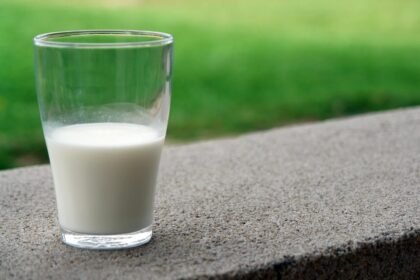Ounces to Gallon Conversion
The converted value is: gallons
Definition of Ounces and Gallons

What an Ounce is, and Its Various Types
You can measure both liquids and solids with the same ounce. Both the fluid ounce (fl oz) and the dry ounce are common units of measurement (oz).
- The volume of a liquid is measured in terms of a fluid ounce. In the US system of measurement, one fluid ounce is equal to around 29.57 milliliters, but in the imperial system, it is equal to about 28.41 milliliters.
- On the other hand, dry ounces are a standard weight measurement for things like flour and sugar. In both the American and imperial systems, 28.35 grams is the equivalent of one dry ounce.
What a Gallon is, and Its Various Types
The volume of liquids is often measured in gallon increments. Both the American gallon and the imperial gallon exist.
- The United States gallon is a standard unit of volume measurement that is equivalent to 128 ounces. The equivalent of one US gallon is 3.785 liters.
- The United Kingdom and other Commonwealth countries use the imperial gallon as a standard unit of measurement. That is the same as 160 ounces of liquid. The approximate volume of one imperial gallon is 4.546 liters.
Also See: How Many Cups in a Liter?: Use Our Cups to Liter Converter
Relationship Between Ounces and Gallons
Conversion Factor Between Ounces and Gallons
The ounce-to-gallon conversion factor varies depending on the ounce and gallon sizes in use.
- Divide the number of fluid ounces you want to convert by 128 (the number of fluid ounces in a US gallon) or 160 (the number of fluid ounces in a metric gallon) (the number of fluid ounces in an imperial gallon).
- First, the weight must be converted to a volume measurement before it can be used to calculate gallons from dry ounces. The answer to this question is dependent on the density of the material being evaluated. With the above conversion factor, you can determine the volume in milliliters from the given fluid-ounce measurement.
Calculation Example
Example of converting fluid ounces to gallons:
- Convert 64 fluid ounces to US gallons: 64/128 = 0.5 US gallons
- Convert 64 fluid ounces to imperial gallons: 64/160 = 0.4 imperial gallons
Example of converting gallons to fluid ounces:
- Convert 2.5 US gallons to fluid ounces: 2.5 x 128 = 320 fluid ounces
- Convert 1.2 imperial gallons to fluid ounces: 1.2 x 160 = 192 fluid ounces
Measurement Precision, Especially for Huge Amounts
When dealing with huge amounts, it is essential to measure precisely because even the smallest of discrepancies can have a major impact on the overall output. An inaccuracy of just 1 milliliter per fluid ounce, for instance, when measuring a large volume of liquid, could lead to a substantial discrepancy when estimating the total volume in gallons. Thus, it is essential to employ reliable measuring instruments and methods and to verify all results.
Converting Ounces to Gallons
How to Convert Ounces to Gallons
To convert ounces to gallons, simply divide the desired quantity by the appropriate conversion factor for the gallon size in question. It’s easy to convert fluid ounces to US gallons by dividing by 128, while dry ounces to imperial gallons require converting the weight to volume first and then dividing by 160.
Ounces to Gallons Conversion Guide
- Find out which ounces and gallons are being used.
- Determine the appropriate multiplier for the type of gallon being used.
- To determine the number of gallons, divide the amount in ounces by the multiplier.
Examples of Ounce-to-Gallon Conversions
- Example 1: Convert 32 fluid ounces to US gallons.
- Conversion factor: 1 US gallon = 128 fluid ounces
- Calculation: 32 fluid ounces ÷ 128 = 0.25 US gallons
- Answer: 0.25 US gallons
- Example 2: Convert 24 dry ounces to imperial gallons.
- Conversion factor: 1 dry ounce = 0.07 imperial fluid ounces (assuming a density of 1.00 g/mL)
- Calculation: 24 dry ounces ÷ 0.07 imperial fluid ounces = 342.86 imperial fluid ounces
- Conversion factor: 1 imperial gallon = 160 imperial fluid ounces
- Calculation: 342.86 imperial fluid ounces ÷ 160 = 2.14 imperial gallons
- Answer: 2.14 imperial gallons
- Example 3: Convert 16 fluid ounces to imperial gallons.
- Conversion factor: 1 imperial gallon = 160 fluid ounces
- Calculation: 16 fluid ounces ÷ 160 = 0.1 imperial gallons
- Answer: 0.1 imperial gallons
Converting Gallons to Ounces
How to Convert Gallons to Ounces
Knowing the gallons to ounces conversion factor is essential for any such conversion. The American gallon and the imperial gallon are two different kinds of gallons. An imperial gallon is equal to 160 ounces, while a US gallon is 128 ounces.
In the United States, the conversion from gallons to ounces is as follows:
- ounces = gallons x 128
- ounces = gallons x 160
Gallons to Ounces Conversion Guide
In order to convert US gallons to ounces, follow these steps:
- First, you’ll need to decide how many gallons you wish to change.
- Increase the amount in gallons by 128 for Step 2. (the number of fluid ounces in a US gallon).
- Third, if necessary, adjust the number of decimal places to get the desired output.
- Add the “ounces” unit in Step 4.
And here are the imperial steps for converting gallons to ounces:
- First, you’ll need to decide how many gallons you wish to change.
- Measured in gallons, step two is to multiply by 160. (the number of fluid ounces in an imperial gallon).
- Third, if necessary, adjust the number of decimal places to get the desired output.
- Add the “ounces” unit in Step 4.
Gallon-to-Ounce Conversion Examples
Here are some US and imperial examples of how to convert gallons to ounces:
- Example 1: Convert 2 gallons to fluid ounces using the US measurement system. ounces = 2 x 128 = 256 fluid ounces
- Example 2: Convert 3.5 gallons to fluid ounces using the imperial measurement system. ounces = 3.5 x 160 = 560 fluid ounces
- Example 3: Convert 1/2 gallon to fluid ounces using the US measurement system. ounces = 0.5 x 128 = 64 fluid ounces
- Example 4: Convert 1.25 gallons to fluid ounces using the imperial measurement system. ounces = 1.25 x 160 = 200 fluid ounces
Frequently Ask Questions
How many ounces are in a gallon?
The amount of fluid that can be contained in a gallon varies with the type of gallon being utilized. It’s important to note that a gallon is defined as 128 ounces in the American system and 160 ounces in the Imperial system.
What is the difference between a fluid ounce and a dry ounce?
A dry ounce is a unit used to measure the weight of dry substances like wheat or sugar, while a fluid ounce is a unit used to measure volume, specifically the volume of a liquid.
How do I convert ounces to gallons?
The formula for converting fluid ounces to gallons is as follows: 128 (US gallons) or 160 (metric gallons) (for imperial gallons). You can use the above conversion factor to get from dry ounces to gallons, but first, you’ll need to convert the weight to a volume measurement.
Why is precision important when measuring ounces and gallons?
Little inaccuracies might result in considerable variances when measuring big quantities in ounces or liters, therefore accuracy is crucial. Thus, it is essential to employ reliable measuring instruments and methods and to verify all results.
What are some common uses for gallons and ounces?
Milk, water, and gas are just a few of the liquids typically measured in gallons and ounces. Dry substances like flour and sugar can also be measured using them.
Can I convert between US and imperial gallons?
You can interchangeably use the US and Imperial gallons. An imperial gallon is roughly 1.20 US gallons, while a US gallon is about 0.83 imperial gallons. Multiply or divide by the conversion factor to make the change.











